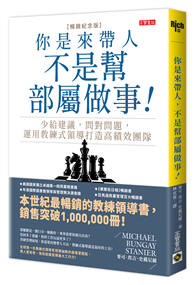Betrayal and Treason examines betrayals as violations of both trust and loyalty. It offers a typology based on membership in or out of collectives within the contexts of secrecy/non-secrecy. The book shows that betrayals include such categories as espionage, whistle-blowing, infidelity, political turncoating, conversions, collaboration with occupying forces, informers, mutinies, defections, strike-breakers, professional, intellectual, and international betrayals, human rights violations, surveillance, assassinations, and state sponsored terror. Each one of the categories is presented with enticing, stimulating, and appropriate real-life illustrations and narratives.The book focuses on treason, examines diverse cultures (European countries, Israel, Canada, the United States) and such periods as World War II, the conquest of Mexico, and looks at such figures as Benedict Arnold, Ezra Pound, Edward VIII, Malinche, Vindkun Quisling, Lord Haw Haw, Tokyo Rose, and a host of others. Since World War II is an excellent period through which one can examine issues of treason, and since there has been such an increased interest in World War II, this book places a particular emphasis on that period and war. Betrayal and Treason is original in its conceptual framework, and in its breadth and depth of coverage. Yet judging by the amount of books published on similar topics in the past, there can hardly be a doubt that there has always been a genuine demand and "hunger" for an inclusive and integrative book such as this one. By offering a new and interpretive framework for betrayals, this book can serve both scholars and lay people alike in gaining a much better understanding of such a complex and fascinating behavior as betrayal.
| FindBook |
有 1 項符合
Betrayal and Treason: Violations of Trust and Loyalty的圖書 |
 |
Betrayal and Treason: Violations of Trust and Loyalty 作者:Ben-Yehuda 出版社:Routledge 出版日期:2001-07-30 語言:英文 規格:平裝 / 415頁 / 22.9 x 16.3 x 2.8 cm / 普通級 |
| 圖書館借閱 |
| 國家圖書館 | 全國圖書書目資訊網 | 國立公共資訊圖書館 | 電子書服務平台 | MetaCat 跨館整合查詢 |
| 臺北市立圖書館 | 新北市立圖書館 | 基隆市公共圖書館 | 桃園市立圖書館 | 新竹縣公共圖書館 |
| 苗栗縣立圖書館 | 臺中市立圖書館 | 彰化縣公共圖書館 | 南投縣文化局 | 雲林縣公共圖書館 |
| 嘉義縣圖書館 | 臺南市立圖書館 | 高雄市立圖書館 | 屏東縣公共圖書館 | 宜蘭縣公共圖書館 |
| 花蓮縣文化局 | 臺東縣文化處 |
|
|
圖書介紹 - 資料來源:博客來 評分:
圖書名稱:Betrayal and Treason: Violations of Trust and Loyalty
內容簡介
作者簡介
Nachman Ben-Yehuda is professor of sociology and Dean of the Faculty of Social Sciences at Hebrew University in Jerusalem. Specializing in the study of deviance, he graduated from the University of Chicago. He is the author of Deviance and Moral Boundaries, The Politics and Morality of Deviance, Political Assassinations by Jews, Moral Panics (with Erich Goode), and The Masada Myth.
|











